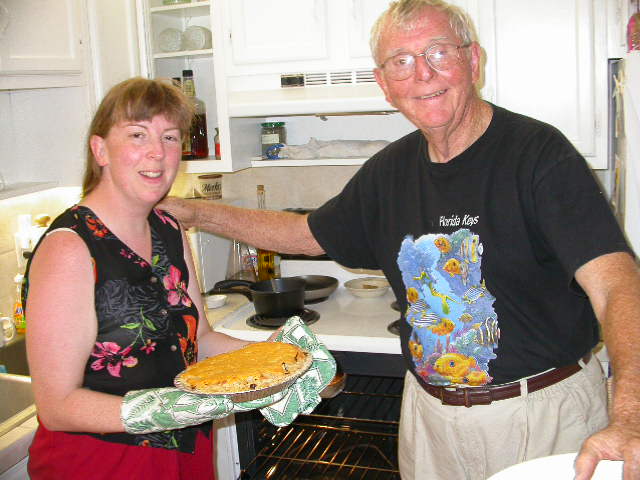I write this sitting in the middle of an industrial wasteland. To my right is the boatyard, where workers and do-it-yourself owners spend their days grinding and sanding and fabricating things out of noxious materials. Our corner is quieter than most, since our closest neighbor, the classic Chris Craft Jerilane, just spends her days slowly rotting into oblivion.
To my left is water. About 75 feet away is the far shore, strewn with litter. Broken concrete, rotten pilings, and at least one sunken boat make it look forbidding to the casual observer.
But I am no longer a casual observer. I have spent hours sitting on deck or in the cockpit, and I have been rewarded.
I have become a birdwatcher.
At first, I spent my time looking across the larger waterway, towards the noisy gypsum factory. But my eye was caught by huge flocks of birds, moving northward in the evenings. Thousands of them would find a thermal, circle to gain altitude, then cruise across the sky to the next one. I couldn’t identify the birds, and I could only guess that they were returning to Lake Pontchartrain after a day of Gulf fishing. Once, when we went sailing, I saw even larger flocks over the lake, so vast that they stretched across a third of the horizon. I was hooked.
The next thing that piqued my curiosity was the meadow. On the other side of the water, above the debris, is a screen of wild bushes and grasses that have gained a toehold on the concrete. Just beyond is a large field, bordered by a tall fence, with wide locked gates and concrete driveways to nowhere. Near the water’s edge are bollards the size of my car, and there’s an electrical transformer, its wires clipped. An abandoned shipyard, perhaps?
But not abandoned at all! One day, a couple of songbirds came and perched on the wires and serenaded us as we worked on the boat. Chubby, with yellow tummies, their song sounded like “Sweetie, come here!” Once they had gotten my attention, I saw that they shared their human-free meadow and the abandoned building next door with swallows, crows, and other small songbirds. With my binoculars, I watch a group of them trying to land on a utility wire. At first, they all try to land on top of each other at one spot on the wire, before sorting themselves out and perching evenly spaced. But when it’s sorted out, they sometimes leave one odd guy a couple of yards away, as if he has BBO (bird body odor).
My favorite birds to watch are the water birds who fish here in our slip. There are pelicans, herons, ducks, and (I think) grebes. A cute little brown and green fellow comes to visit every day, sometimes catching minnows only a few feet from the boat. We call him, “the little green guy,” but he’s probably a green heron. Three or four ducks come by every evening, including one white one. Maybe he’s a domesticated duck who escaped and is now enjoying the free life! His quacking sounds so much like happy laughter, I laugh out loud when I hear him. The other day, I had the stereo on, and I heard him singing along with Joao Gilberto’s “O Pato” (“The Duck”).
Today, as I write this, I have seen and heard hundreds of birds. A flock of seagulls goes one way, and a flock of ibis goes the other. A pelican uses the wind to fly sideways to his chosen spot before gently drifting down for a landing, making hardly a ripple. He’ll certainly make a big enough splash the next time he catches a fish!
One tern goes by in each direction. Left tern and right tern? A songbird sings in the meadow, and further away, I hear jays and crows. Swallows flit by, their flight reminding me of a strobe light.
On the opposite shore, a long line of black ducks with white beaks paddles by. Each one pops his rear in the air for a while, resurfacing like a cork. I can’t hear them, but with binoculars, I can see their beaks moving and can imagine them quacking. A grebe goes the other way, his body cleverly hidden below the water. It seems like a major struggle when he decides to take off and fly away, and I can imagine him thinking, “Aw heck, is flying really worth the bother?”
I take out the binoculars to slowly scan the far shore and catch sight of one of our regular visitors: A black-crowned night heron. He sits on the rubble along the shore during the day, his beak down, snoozing, hardly moving except to preen. His black and white and gray feathers are elegant, and he seems proud of the long white crest feather on top of his head. Watching him, I am reminded that there is beauty in the most unexpected places. It is worth looking twice and never being “just a casual observer.”

